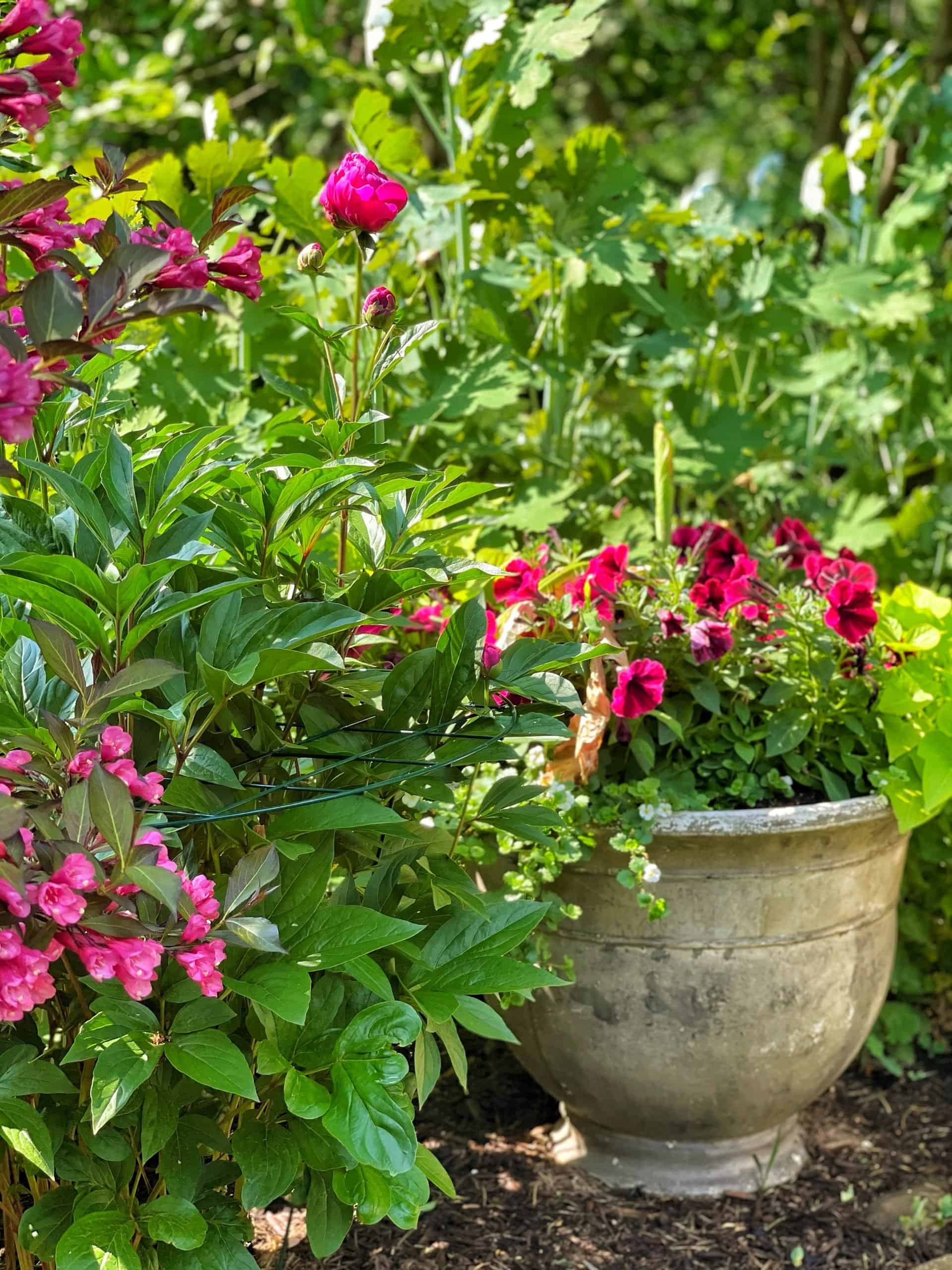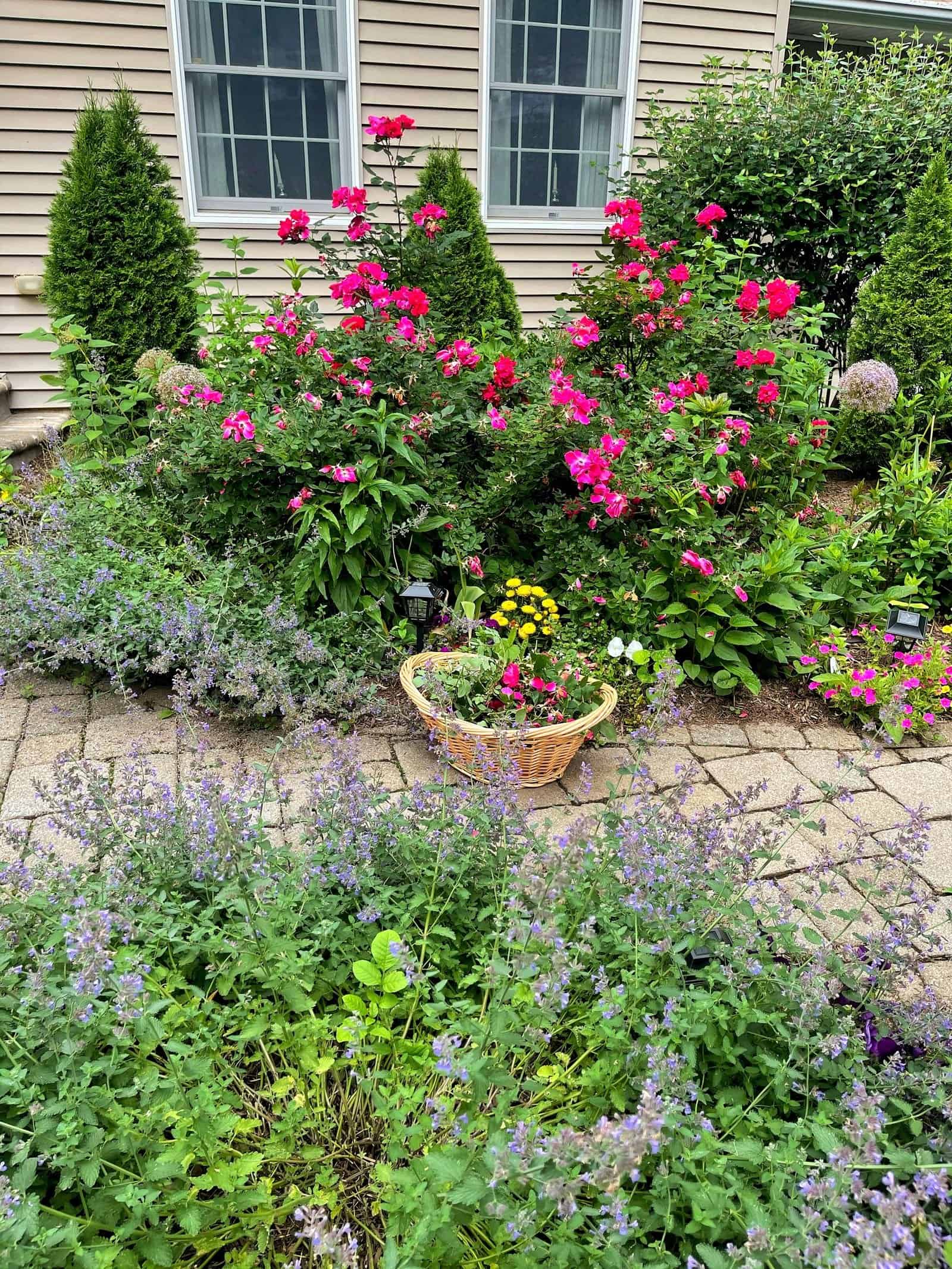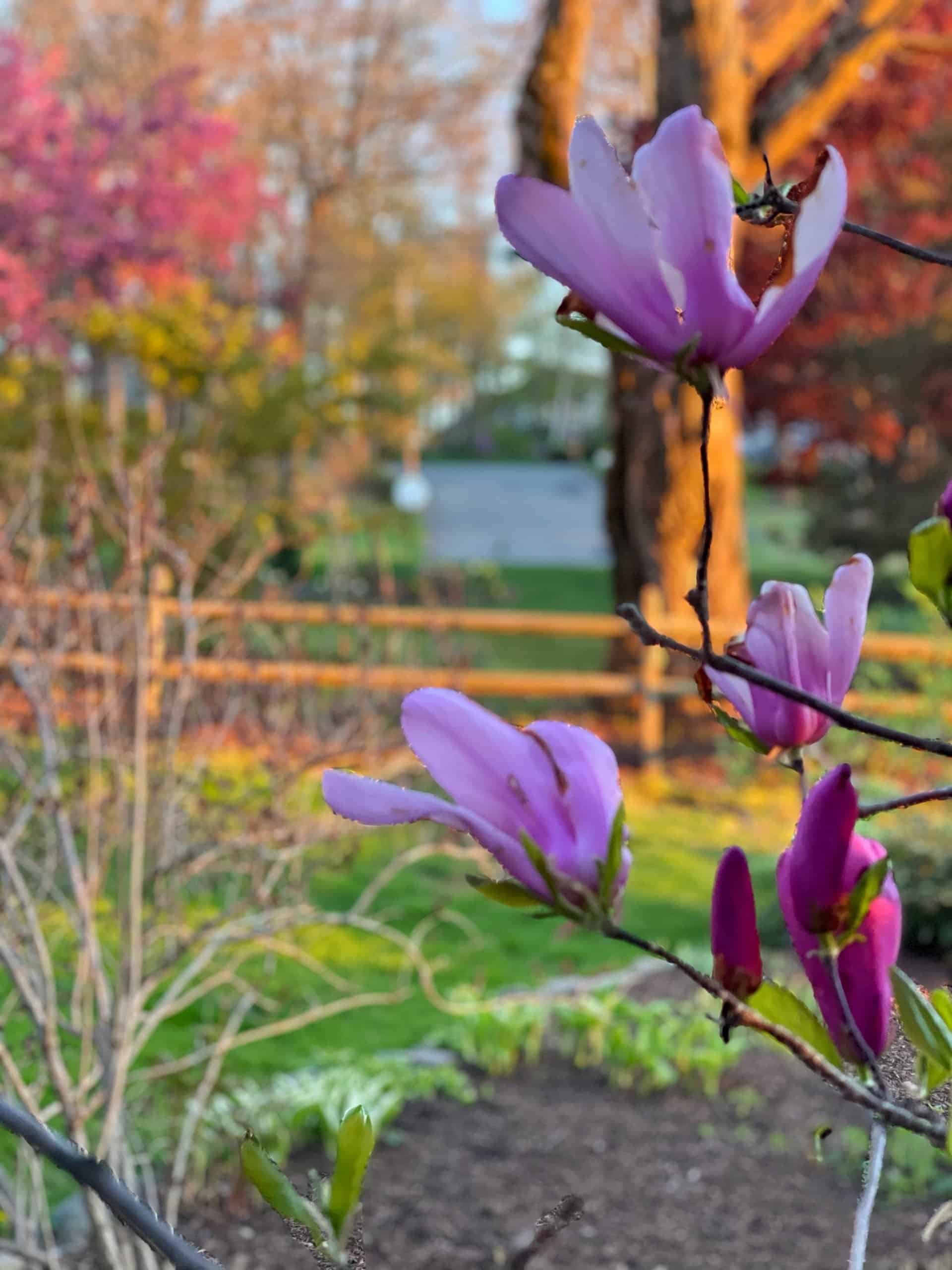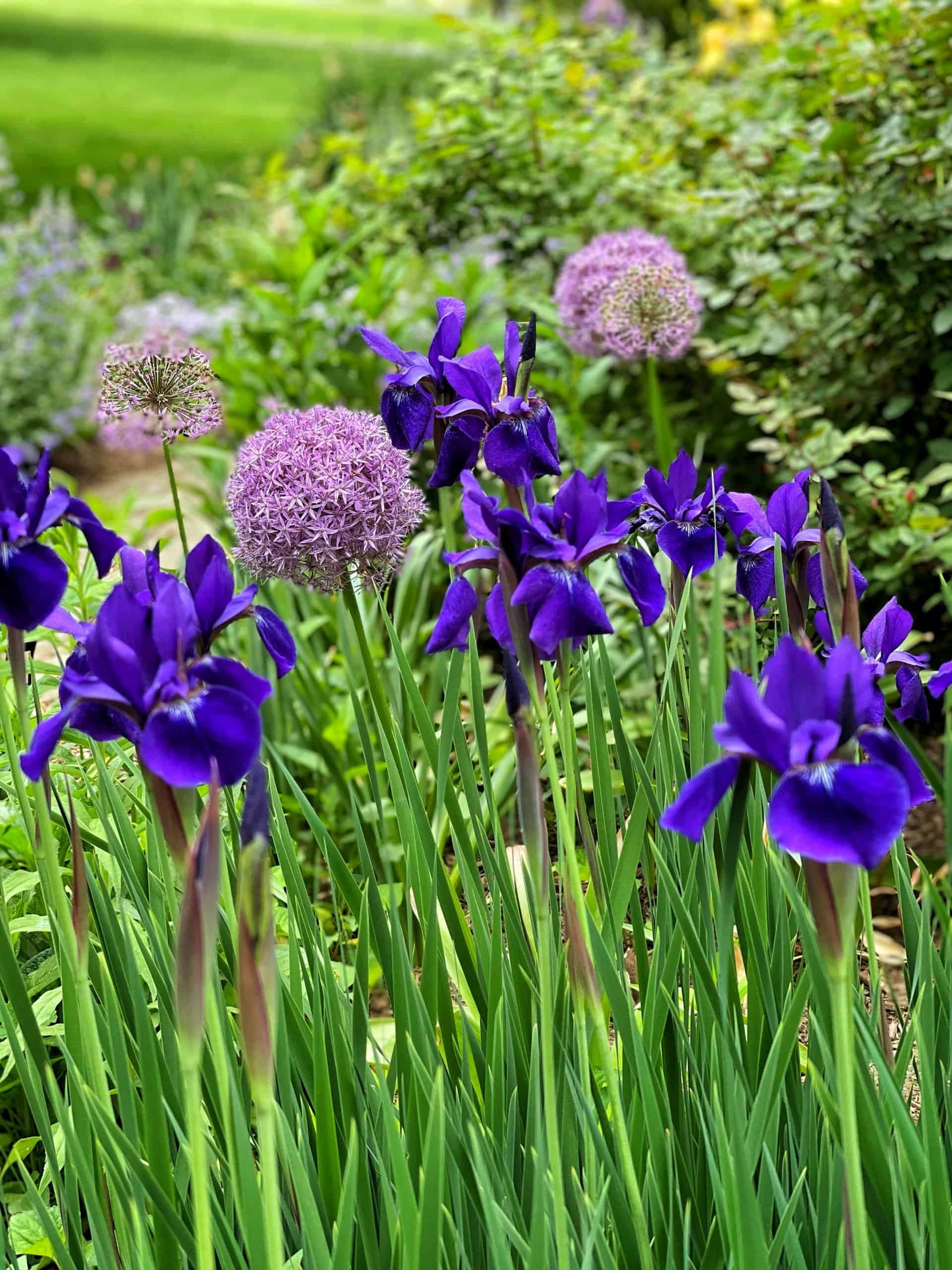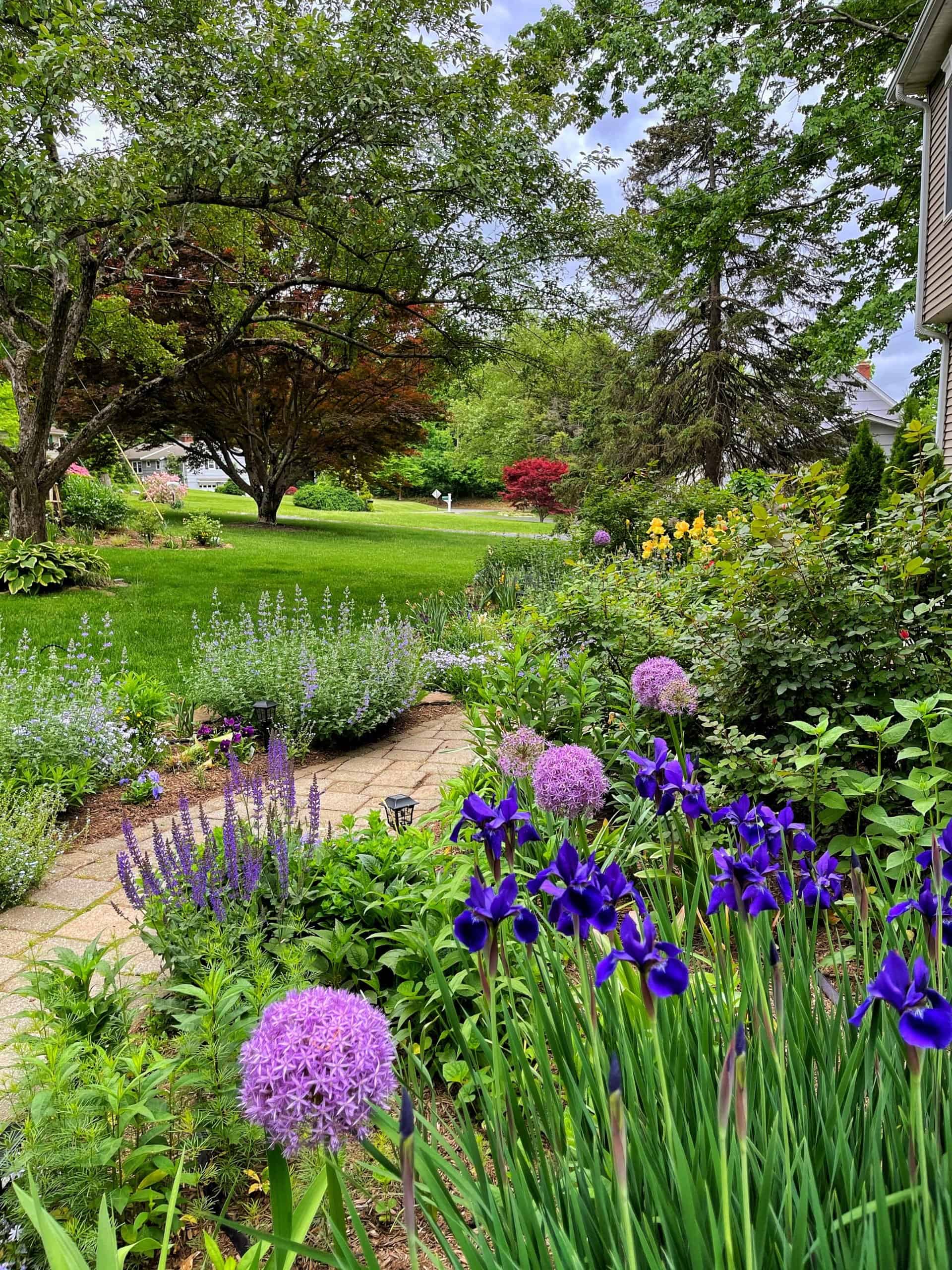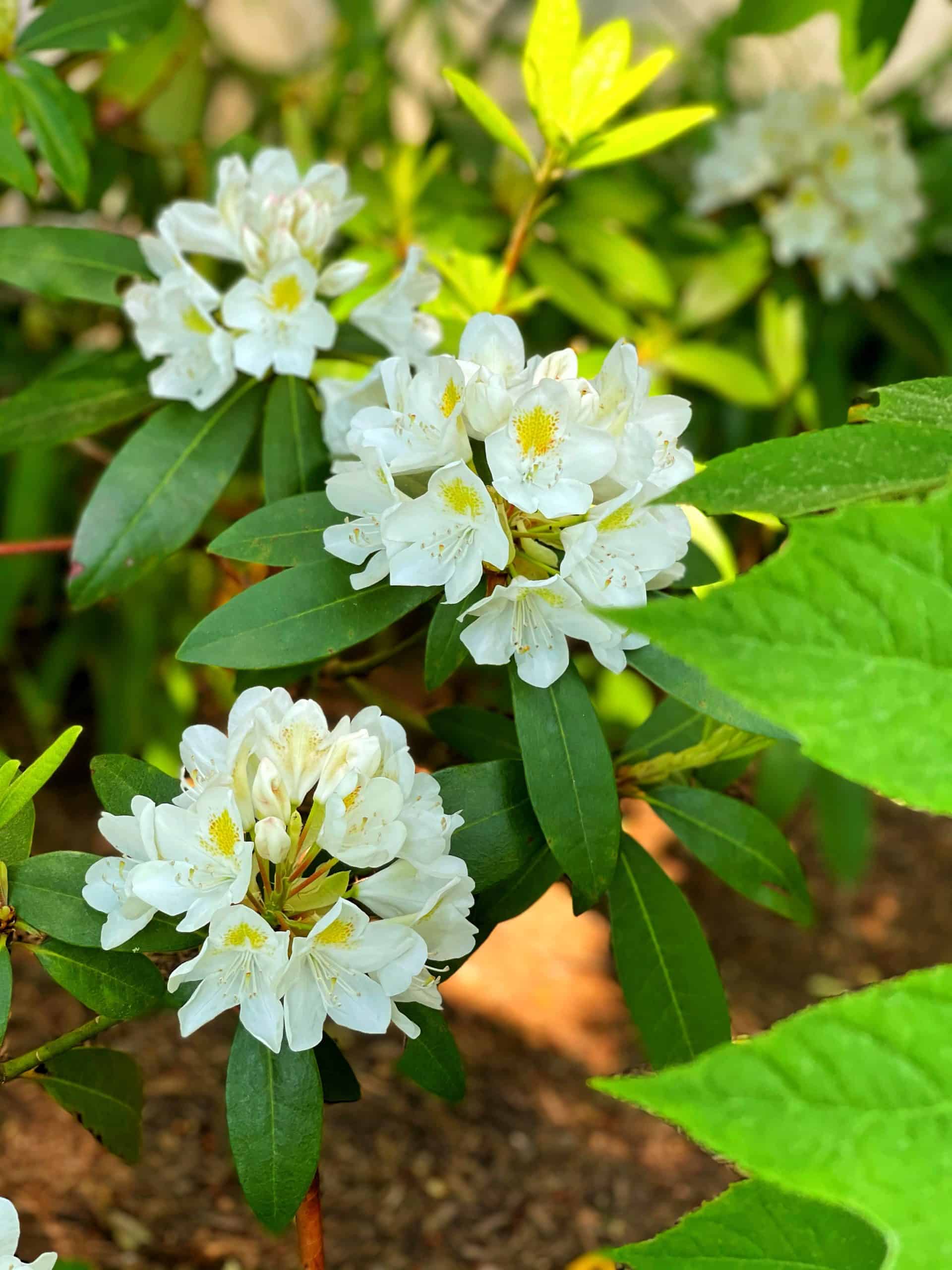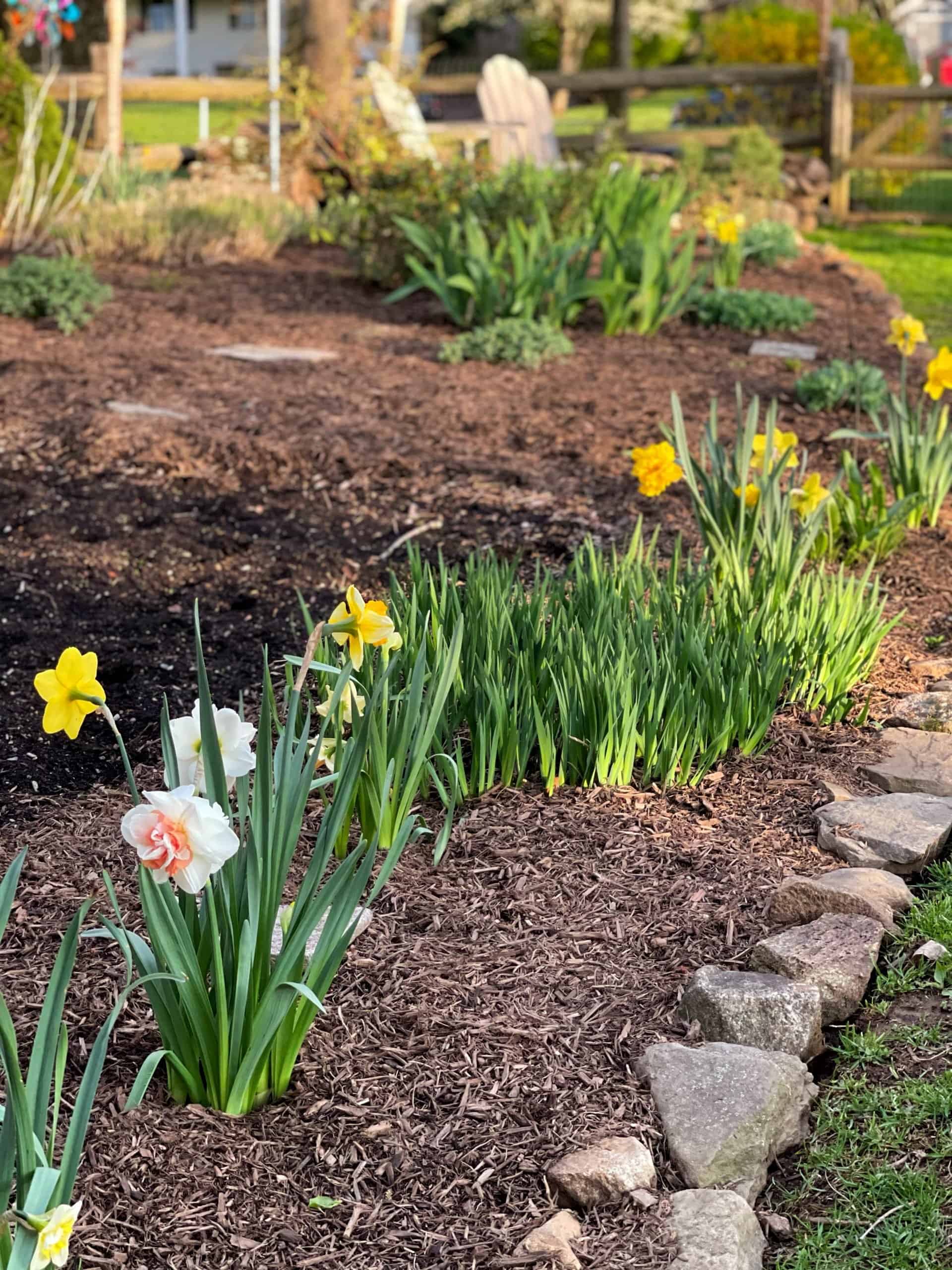Conquer spring gardening anxiety! Here’s a quick spring garden clean-up checklist to prepare the garden for the next growing season. This no-sweat guide clears the clutter, sparks joy, & preps your soil for paradise. Grow happy!
Winter’s icy grip may still linger, but beneath the frosted earth, anticipation stirs. For gardeners, late winter/early spring isn’t just a countdown to warmer days, it’s a call to action, a promise of green triumph and blooms waiting to erupt.
Tackling that spring garden checklist is more than just tidying up; it’s a chance to get back in the soil again, banish the remnants from last season, and pave the way for a vibrant new garden.
With each weed pulled, each bed fluffed, whispers a promise of summer bounty, of fragrant blooms and buzzing bees, beautiful butterflies, and lots of joyful hummingbirds.
And by getting ahead of the season, you’re not just conquering clutter, you’re laying the foundation for a flourishing year. So let the thaw be your starting pistol, grab your gloves, and embrace the invigorating rebirth of your garden.
Whether you have a flower or vegetable garden, there are certain things we gardeners need to do to prepare the beds in spring for the next growing season. It’s my favorite time of year because I love to see my plants break ground. What survived the winter. What didn’t. Deciding what to do differently. And all of the planning that goes in between.
There are lots of things gardeners do to clean up and prepare the gardens for spring. Here’s a spring gardening checklist to get you started when cleaning up the garden.
(Posts on stacyling.com may contain affiliate links. Click HERE for full disclosure.)
But First…Spring Cleaning vs Fall Garden Clean Ups
When do you prefer to do your garden clean-ups?
For me, I prefer cleaning up the garden in spring rather than fall. While the answer is a matter of personal preference, here’s why focus more on spring cleaning in the garden, than the fall.
- I like leaving the perennial seed heads for the birds to eat during the colder months when food is scarce.
- Leaving dried, dead perennial plant debris up in fall and winter allows plants to reseed themselves in the garden. This means they will drop seed and new plants will grow in other areas of the garden. And for me, it is a thrill to see where the newbies emerge in spring.
- When seed heads and deceased perennials remain intact until spring they add winter interest. If we cut everything back, gardens look flat and boring throughout winter. When left intact, the snow sits on them and adds winter interest.
- There also might be developing butterfly larvae on the debris, so it’s best to keep the deceased foliage intact until spring to help keep the butterfly lifecycle going.

When Should I Start a Spring Garden Clean-Up?
The best day to start a spring cleanup in the garden is that first warm spring day. Now this warm spring-like day might be in late winter too, but whenever that first day is that warm and sunny, you’ll find me outside cleaning up the gardens.
On that first warm day, I go outside, rake out the beds, and start spring cleaning by removing dead garden debris. Some of the debris is loose on the ground. And others I need to cut back to the ground, and then rake it out.
There are also usually leaves leftover from fall, branches and twigs from trees, as well as annual and perennial plant debris that all needs to be cleaned up. Since I have a lot of gardens, I break them down into sections so the clean-up does not seem as daunting over a matter of days.
I try to tell myself to “just do the front gardens.” But oftentimes, I wind up doing the whole yard clean up in a day anyway. Because once I start my spring garden clean-up checklist, I just can’t stop. Do you do that too?
Depending on the size of the yard clean-up task, I’ll either use a wheelbarrow or pop-up garden container to collect the debris. While I love using the wheelbarrow, I prefer using the pop-up garden container because it’s light, collapsible, easy to move around, and holds so much!

How Do You Know What Plants to Clean Up and Cut Back in the Spring?
Cleaning Up Annuals in the Spring
For starters, any annuals you planted the following year that are completely dried and dead, pull out or cut back.
If we had a mild New Jersey winter, I have occasionally seen an annual bounce back but that is rare. I plant winter pansies in the fall and do not pull these out or cut them back for this very reason.
If you plant pansies in the fall, they should overwinter and bounce back in the spring (depending where you live). You will know if they survived the winter by looking for green foliage, stems, or other signs of life. If you are unsure, I recommend leaving them alone until you know they are completely dead.

Do All Perennials Need to Be Cut Back in the Spring?
Where perennials are concerned, it really depends on the plants you have. Because not all perennials should be cut back.
The easiest way to properly care for your perennial plants is to keep the plant tag that comes with every plant or take a picture of that tag with your cell phone and file it in your phone. Then, when the growing season begins, do some online research as to how to prepare that plant for spring.
In most cases, it will be obvious because you will see new growth at the base. But in other cases, it will not be as obvious. Therefore, it is wise to double-check before cutting a plant to the ground that should not have been cut.

Cutting Back Flowering Trees and Shrubs
The same concept applies to flowering trees and shrubs – you need to know what you have to know when and how to prune them.
I can’t tell you how many times I have been asked why a certain shrubs, like hydrangeas, did not bloom. Oftentimes it is because it was pruned at the wrong time.
If you cut a plant back that has buds on it, well, you just cut the flower buds off and it won’t bloom. Therefore, I cannot stress enough how important it is to know what plants you have before you grab those pruners.
Not Sure What Plants You Have?
Contact your local garden extension because they can help identify plants. It’s an easy call to make and so worth it to ensure you get blooms!

Quick Spring Garden Clean-Up Checklist
Spring is a great time to get your garden cleaned up and ready for the growing season. Here are some spring garden ideas, tips, and tasks to consider for your garden spring cleaning:
Yard Clean Up: Remove Leaves and Debris From Garden Beds
This should always be one of the first tasks on your spring gardening checklist. Gently rake and remove leaves and debris from the garden beds.
Clearing the debris allows sunlight and air circulation to get to the soil, promoting optimal conditions for emerging plants. Dead plant material can also harbor diseases and pests, which you don’t want hanging around in your garden!
In general, it’s a good idea to set aside those leaves and garden debris in compost and leaf mold piles. If any of that plant debris or foliage is suspected to have a pest or disease, do not add them to your compost or leaf mold piles and instead, dispose of them altogether.

Prune Shrubs and Trees
Trim away dead or overgrown branches to shape the plants and encourage new growth. This careful pruning not only makes your shrubs look better, it also promotes their overall health. Just make sure you research the types of shrubs you have before you start trimming to make sure you’re doing it at the right time and in the right way.
Divide and Transplant Perennials
Spring is a great time to rejuvenate and expand your perennial flower garden. Dividing and transplanting established perennials not only revitalizes the plants but also provides an opportunity to rearrange your garden layout. This task promotes better spacing and ensures each plant has the room it needs to flourish.
Make and Add Compost and Leaf Mold
Nourish your soil by incorporating compost and leaf mold. These organic amendments enrich the soil with essential nutrients, improve its structure, and help your soil retain moisture more easily. When you improve the health of your soil, you improve the health of your plants.
If you don’t have a compost or leaf mold pile, you can buy it from the garden nursery. And if you have some room, I would consider starting these piles so you can recycle your garden waste and improve your gardens long term.

Test the Soil
Testing the soil will help you make informed decisions about what to grow and what amendments to add to the soil. Soil testing is an often overlooked spring gardening clean-up task.
Before sowing seeds or planting new additions, take the time to perform a soil test. The test can provide valuable insights into the composition of your soil, so you can make informed decisions about the best new plants to grow and any fertilizers or other amendments it might need. You’ll have a much better growing season if you start with a soil test!
Mulch Garden Beds
Applying a layer of mulch to garden beds helps conserve moisture, suppress weeds, and regulate soil temperature. Mulch not only benefits the plants but also contributes to a polished look for your garden beds.
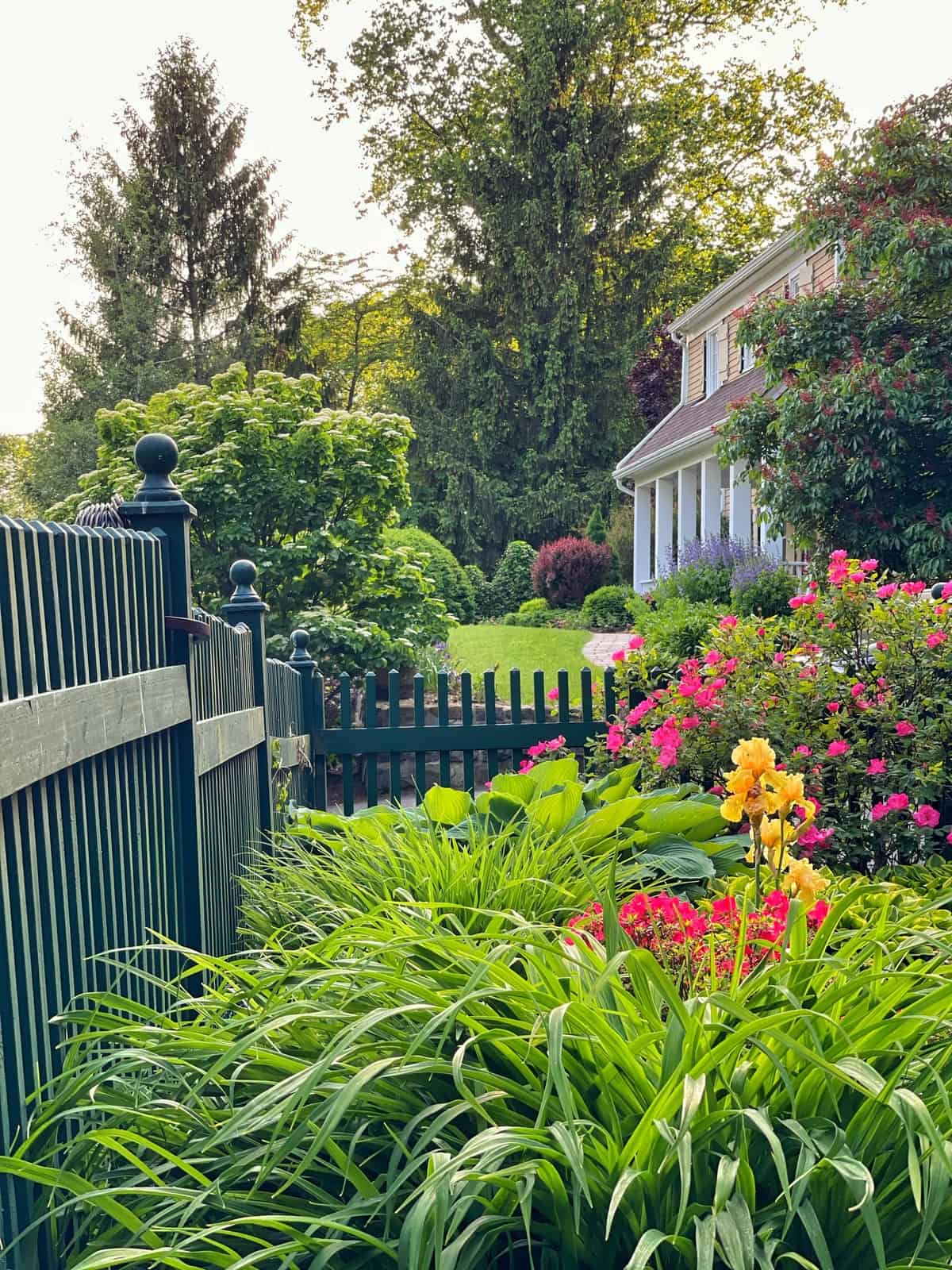
Pull Dead Annuals
Make room for new plants by gently pulling out the remnants of last year’s flowering annuals. Some gardeners do this in the fall, but I prefer to leave these behind throughout the winter to give birds something to feed on and beneficial insects a place to ride out the cold weather.
Pulling dead annuals during your spring gardening clean-up immediately makes your garden look fresh, but also allows for better air circulation, reduces the risk of disease, and creates space for new annuals.
Remove Dead Growth From Perennials
Remember: not all perennials are treated equally. While some perennials require a lot of cutting back in the spring, others do not. Make sure you’re clear on what kind of perennials you have in your garden and then do some research to know exactly what each plant needs during spring clean-up.
One of the first perennials I clean up in the spring are my hellebores (lenten rose). They are generally evergreen, but it’s best to cut back the brown foliage so the new growth can see sunlight and produce healthy foliage with big beautiful blooms.

Pull the Weeds
Pull weeds from all your garden beds to make them look fresh and tidy and make space for new growth. Make sure you dispose of weed debris properly and don’t compost it or mulch it back into your garden (unless you want a garden covered in weeds!).
You’d be surprised how new weeds cropped up since the fall. Don’t leave them! I made that mistake before and long regretted it after a noxious weed completely took over my flower garden and I had to rip out half the plants as a result to get rid of it.
Make Clean Edges in Garden Beds
Take some time while pulling weeks and cutting back plants to refine the edges of your garden beds. Use a garden edging tool so you slice through grass roots and get a beautiful clean edge all season long. This is a small spring gardening task that has a big impact on the overall look and feel of your garden!
Clean and Sharpen Tools
If you didn’t do this in the fall, it’s important to do it in the spring. Make sure all your tools are ready to go before spring gardening officially starts. Doing this in advance ensures you have time to fix or replace any tools that may have been lost or damaged since the last gardening season.
Plant Seeds and Seedlings
This may be the most exciting tip on this spring gardening checklist – it’s time to plant new things! If did not start seed indoors or do winter sowing, and choose to direct sow seeds outdoors in spring, wait until the risk of frost in your area has ended to ensure your plants make it to summer (and beyond).
Spray Deer Repellents
If you live in a locality that has a high deer population like me, start spraying deer repellent on your plants as they emerge from the ground or start to bud with foliage. From the moment my tulips and hostas break ground, I start spraying them with this deer repellent to protect them from deer damage.
Feed Roses If You Grow Them
Roses benefit from a well-balanced fertilizer regimen, promoting healthy foliage and abundant blooms. Make sure you take care of them throughout the spring if you want the best blooms possible.

How Do I Get Rid of Garden Debris After Spring Cleaning?
You’ll notice in the checklist above that a lot of the spring garden clean-up tips in today’s post leave debris behind. From dead annuals and cut-back perennials to weeds and dead leaves, there’s a lot of waste to manage and it can be disposed of in different ways.
Our formal municipality had a leaf, twig, and branch pick-up program in spring and fall, so I am only going to address the other garden waste from my annuals and perennials.
As a gardener, there are two options of what to do with garden debris: toss it with the rest of the garden debris (ask your local municipality how best to dispose of it) or compost it.
Here is a great recipe for composting that will improve the health of your garden. I compost most if not all of our garden debris because eventually breaks down and produces very good soil, AKA, liquid gold. The only garden debris I do not put in my compost pile is weeds and pest infested or diseased foliage.
If I pull weeds, I dispose of them with other garden waste that I am not composting. Why? Because I do not want them to drop seeds or germinate in the pile. If it did, I would then spread those weeds back to my garden which I do not want!

Mulching After Spring Garden Clean-Up
Once your debris is gone and you’ve got your garden beds ready for new plant life, there’s only one question left: to mulch or not to mulch. I like to mulch yearly because it helps suppress the weeds and makes my garden flowers pop.
Since I work so much in the gardens all season long, the mulch washes out or gets dug into the soil with plantings. Plus, it does break down and enrich the soil. If there are budgetary concerns, mulching yearly can be quite costly.
Paying someone else to do it is astronomically more expensive than buying it in bulk and doing it yourself. I know a few gardeners that re-fluff their mulch in alternate years instead of purchasing yearly.
While I know that works for some, because I work the beds so often, it does not work for me. Therefore, I prefer to mulch yearly.

More About Your Spring Gardening Checklist
Do you have any spring clean up tips you’d like to share? How do you prepare your gardens for spring? I would love to know more in the comments below.


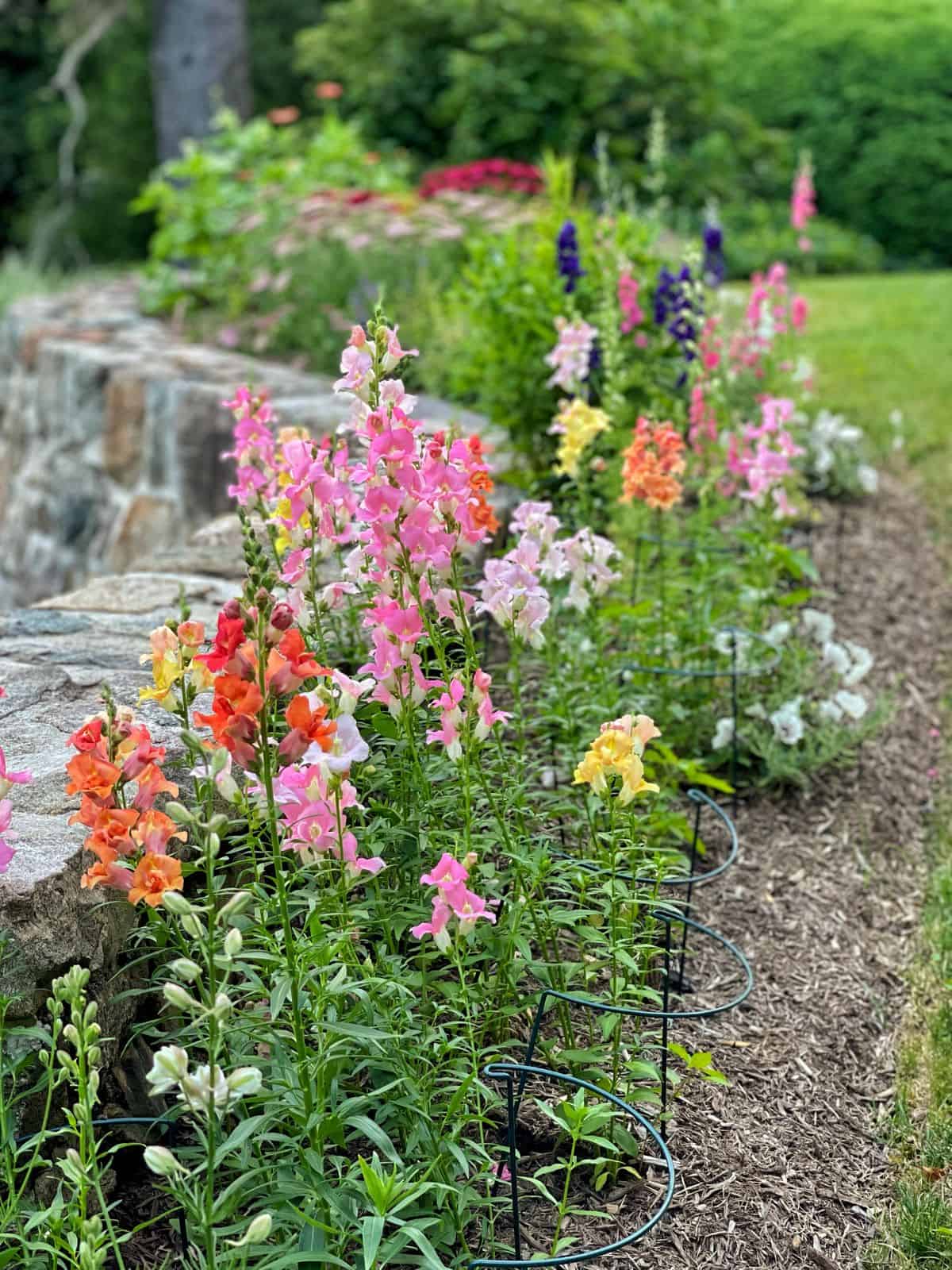
Pin This!
If you like this post, I would love for you to share it on Pinterest. I’ve created the above custom pin for this post.

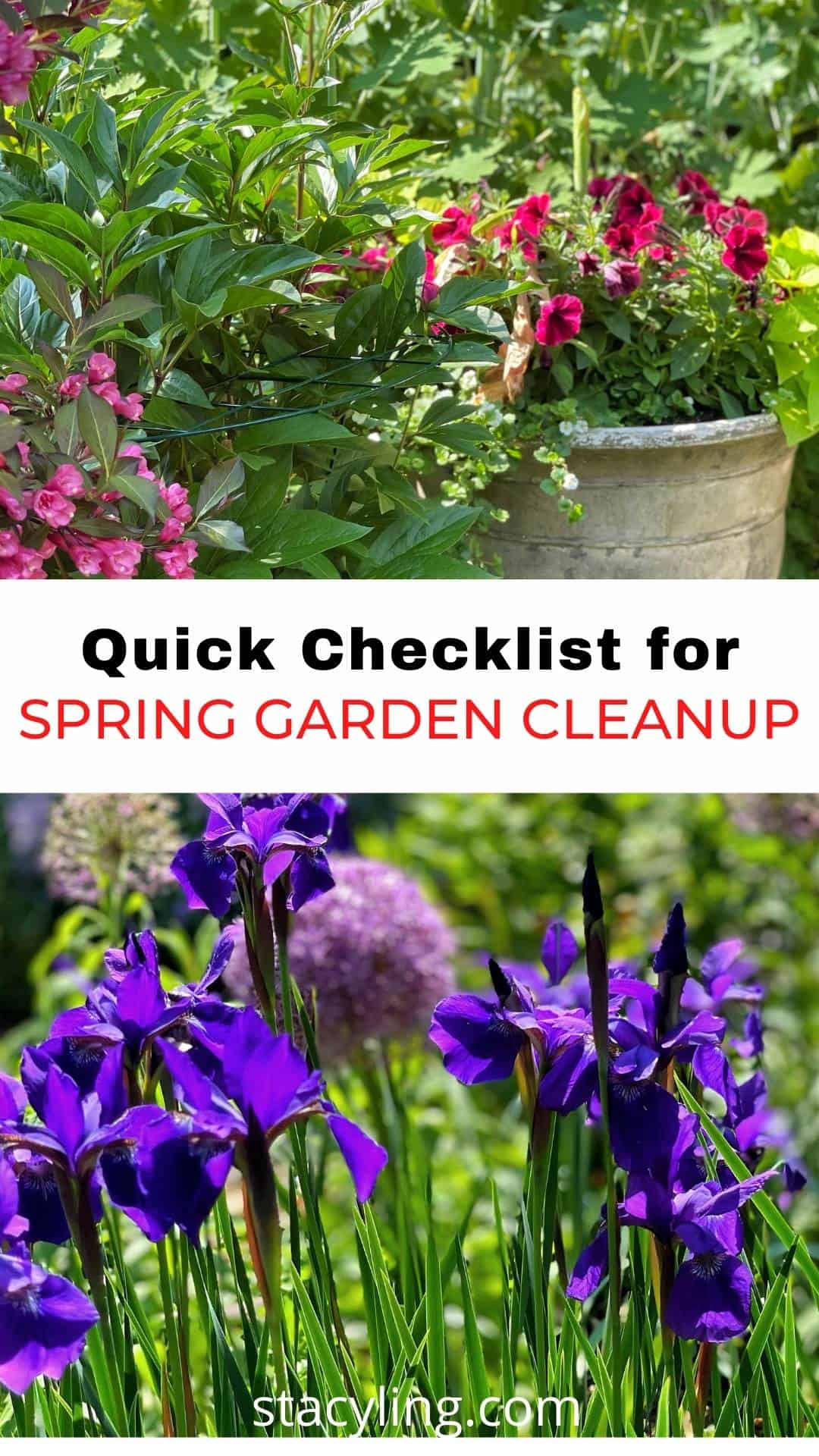
Thank you for visiting the blog today!
Enjoy a beautiful day! xo

